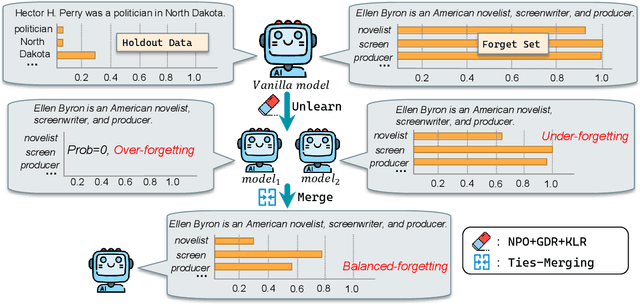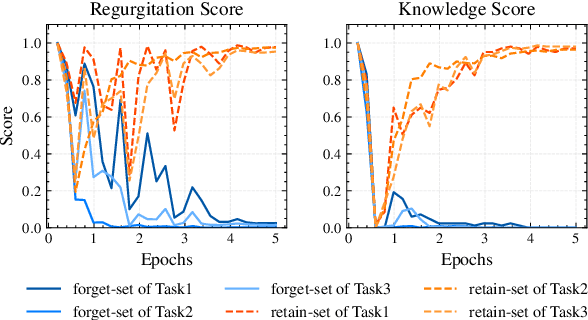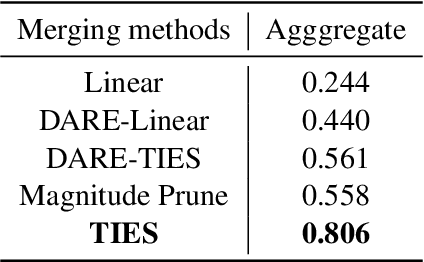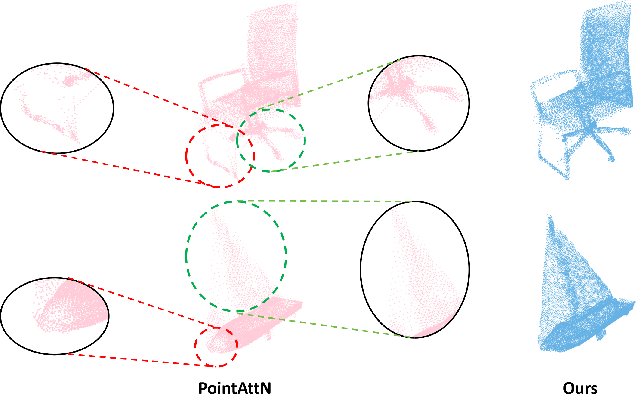Yi Zhong
AutoAssert 1: A LoRA Fine-Tuned LLM Model for Efficient Automated Assertion Generation
Aug 10, 2025



Abstract:As the complexity of software systems continues to increase, the demand for automated testing and maintenance tools is growing exponentially. To meet this urgent need, we propose a new assertion generation method based on Hardware Description Language (HDL). This method combines a lightweight, parameter-adjustable large language model (LLM) with the Unsloth platform to automatically generate test cases, thereby significantly reducing training costs without sacrificing accuracy or generalization performance. Empirical evaluation shows that our method can efficiently generate assertions that strictly conform to the hardware logic. This framework provides a robust and flexible solution to modern software testing and maintenance challenges. https://github.com/liusu-orange/AutoAssert-1 and https://gitee.com/OpenBPU/auto-assert1 are the locations of the source code.
S$^2$M-Former: Spiking Symmetric Mixing Branchformer for Brain Auditory Attention Detection
Aug 07, 2025



Abstract:Auditory attention detection (AAD) aims to decode listeners' focus in complex auditory environments from electroencephalography (EEG) recordings, which is crucial for developing neuro-steered hearing devices. Despite recent advancements, EEG-based AAD remains hindered by the absence of synergistic frameworks that can fully leverage complementary EEG features under energy-efficiency constraints. We propose S$^2$M-Former, a novel spiking symmetric mixing framework to address this limitation through two key innovations: i) Presenting a spike-driven symmetric architecture composed of parallel spatial and frequency branches with mirrored modular design, leveraging biologically plausible token-channel mixers to enhance complementary learning across branches; ii) Introducing lightweight 1D token sequences to replace conventional 3D operations, reducing parameters by 14.7$\times$. The brain-inspired spiking architecture further reduces power consumption, achieving a 5.8$\times$ energy reduction compared to recent ANN methods, while also surpassing existing SNN baselines in terms of parameter efficiency and performance. Comprehensive experiments on three AAD benchmarks (KUL, DTU and AV-GC-AAD) across three settings (within-trial, cross-trial and cross-subject) demonstrate that S$^2$M-Former achieves comparable state-of-the-art (SOTA) decoding accuracy, making it a promising low-power, high-performance solution for AAD tasks.
Why Do Open-Source LLMs Struggle with Data Analysis? A Systematic Empirical Study
Jun 24, 2025Abstract:Large Language Models (LLMs) hold promise in automating data analysis tasks, yet open-source models face significant limitations in these kinds of reasoning-intensive scenarios. In this work, we investigate strategies to enhance the data analysis capabilities of open-source LLMs. By curating a seed dataset of diverse, realistic scenarios, we evaluate models across three dimensions: data understanding, code generation, and strategic planning. Our analysis reveals three key findings: (1) Strategic planning quality serves as the primary determinant of model performance; (2) Interaction design and task complexity significantly influence reasoning capabilities; (3) Data quality demonstrates a greater impact than diversity in achieving optimal performance. We leverage these insights to develop a data synthesis methodology, demonstrating significant improvements in open-source LLMs' analytical reasoning capabilities.
ZJUKLAB at SemEval-2025 Task 4: Unlearning via Model Merging
Mar 27, 2025



Abstract:This paper presents the ZJUKLAB team's submission for SemEval-2025 Task 4: Unlearning Sensitive Content from Large Language Models. This task aims to selectively erase sensitive knowledge from large language models, avoiding both over-forgetting and under-forgetting issues. We propose an unlearning system that leverages Model Merging (specifically TIES-Merging), combining two specialized models into a more balanced unlearned model. Our system achieves competitive results, ranking second among 26 teams, with an online score of 0.944 for Task Aggregate and 0.487 for overall Aggregate. In this paper, we also conduct local experiments and perform a comprehensive analysis of the unlearning process, examining performance trajectories, loss dynamics, and weight perspectives, along with several supplementary experiments, to understand the effectiveness of our method. Furthermore, we analyze the shortcomings of our method and evaluation metrics, emphasizing that MIA scores and ROUGE-based metrics alone are insufficient to fully evaluate successful unlearning. Finally, we emphasize the need for more comprehensive evaluation methodologies and rethinking of unlearning objectives in future research. Code is available at https://github.com/zjunlp/unlearn/tree/main/semeval25.
Right Time to Learn:Promoting Generalization via Bio-inspired Spacing Effect in Knowledge Distillation
Feb 10, 2025



Abstract:Knowledge distillation (KD) is a powerful strategy for training deep neural networks (DNNs). Although it was originally proposed to train a more compact ``student'' model from a large ``teacher'' model, many recent efforts have focused on adapting it to promote generalization of the model itself, such as online KD and self KD. % as an effective way Here, we propose an accessible and compatible strategy named Spaced KD to improve the effectiveness of both online KD and self KD, in which the student model distills knowledge from a teacher model trained with a space interval ahead. This strategy is inspired by a prominent theory named \emph{spacing effect} in biological learning and memory, positing that appropriate intervals between learning trials can significantly enhance learning performance. With both theoretical and empirical analyses, we demonstrate that the benefits of the proposed Spaced KD stem from convergence to a flatter loss landscape during stochastic gradient descent (SGD). We perform extensive experiments to validate the effectiveness of Spaced KD in improving the learning performance of DNNs (e.g., the performance gain is up to 2.31\% and 3.34\% on Tiny-ImageNet over online KD and self KD, respectively).
PointCFormer: a Relation-based Progressive Feature Extraction Network for Point Cloud Completion
Dec 11, 2024



Abstract:Point cloud completion aims to reconstruct the complete 3D shape from incomplete point clouds, and it is crucial for tasks such as 3D object detection and segmentation. Despite the continuous advances in point cloud analysis techniques, feature extraction methods are still confronted with apparent limitations. The sparse sampling of point clouds, used as inputs in most methods, often results in a certain loss of global structure information. Meanwhile, traditional local feature extraction methods usually struggle to capture the intricate geometric details. To overcome these drawbacks, we introduce PointCFormer, a transformer framework optimized for robust global retention and precise local detail capture in point cloud completion. This framework embraces several key advantages. First, we propose a relation-based local feature extraction method to perceive local delicate geometry characteristics. This approach establishes a fine-grained relationship metric between the target point and its k-nearest neighbors, quantifying each neighboring point's contribution to the target point's local features. Secondly, we introduce a progressive feature extractor that integrates our local feature perception method with self-attention. Starting with a denser sampling of points as input, it iteratively queries long-distance global dependencies and local neighborhood relationships. This extractor maintains enhanced global structure and refined local details, without generating substantial computational overhead. Additionally, we develop a correction module after generating point proxies in the latent space to reintroduce denser information from the input points, enhancing the representation capability of the point proxies. PointCFormer demonstrates state-of-the-art performance on several widely used benchmarks.
Articulatory Phonetics Informed Controllable Expressive Speech Synthesis
Jun 15, 2024

Abstract:Expressive speech synthesis aims to generate speech that captures a wide range of para-linguistic features, including emotion and articulation, though current research primarily emphasizes emotional aspects over the nuanced articulatory features mastered by professional voice actors. Inspired by this, we explore expressive speech synthesis through the lens of articulatory phonetics. Specifically, we define a framework with three dimensions: Glottalization, Tenseness, and Resonance (GTR), to guide the synthesis at the voice production level. With this framework, we record a high-quality speech dataset named GTR-Voice, featuring 20 Chinese sentences articulated by a professional voice actor across 125 distinct GTR combinations. We verify the framework and GTR annotations through automatic classification and listening tests, and demonstrate precise controllability along the GTR dimensions on two fine-tuned expressive TTS models. We open-source the dataset and TTS models.
GTR-Voice: Articulatory Phonetics Informed Controllable Expressive Speech Synthesis
Jun 15, 2024

Abstract:Expressive speech synthesis aims to generate speech that captures a wide range of para-linguistic features, including emotion and articulation, though current research primarily emphasizes emotional aspects over the nuanced articulatory features mastered by professional voice actors. Inspired by this, we explore expressive speech synthesis through the lens of articulatory phonetics. Specifically, we define a framework with three dimensions: Glottalization, Tenseness, and Resonance (GTR), to guide the synthesis at the voice production level. With this framework, we record a high-quality speech dataset named GTR-Voice, featuring 20 Chinese sentences articulated by a professional voice actor across 125 distinct GTR combinations. We verify the framework and GTR annotations through automatic classification and listening tests, and demonstrate precise controllability along the GTR dimensions on two fine-tuned expressive TTS models. We open-source the dataset and TTS models.
Orchestrate Latent Expertise: Advancing Online Continual Learning with Multi-Level Supervision and Reverse Self-Distillation
Mar 30, 2024



Abstract:To accommodate real-world dynamics, artificial intelligence systems need to cope with sequentially arriving content in an online manner. Beyond regular Continual Learning (CL) attempting to address catastrophic forgetting with offline training of each task, Online Continual Learning (OCL) is a more challenging yet realistic setting that performs CL in a one-pass data stream. Current OCL methods primarily rely on memory replay of old training samples. However, a notable gap from CL to OCL stems from the additional overfitting-underfitting dilemma associated with the use of rehearsal buffers: the inadequate learning of new training samples (underfitting) and the repeated learning of a few old training samples (overfitting). To this end, we introduce a novel approach, Multi-level Online Sequential Experts (MOSE), which cultivates the model as stacked sub-experts, integrating multi-level supervision and reverse self-distillation. Supervision signals across multiple stages facilitate appropriate convergence of the new task while gathering various strengths from experts by knowledge distillation mitigates the performance decline of old tasks. MOSE demonstrates remarkable efficacy in learning new samples and preserving past knowledge through multi-level experts, thereby significantly advancing OCL performance over state-of-the-art baselines (e.g., up to 7.3% on Split CIFAR-100 and 6.1% on Split Tiny-ImageNet).
SynthTab: Leveraging Synthesized Data for Guitar Tablature Transcription
Sep 22, 2023Abstract:Guitar tablature is a form of music notation widely used among guitarists. It captures not only the musical content of a piece, but also its implementation and ornamentation on the instrument. Guitar Tablature Transcription (GTT) is an important task with broad applications in music education and entertainment. Existing datasets are limited in size and scope, causing state-of-the-art GTT models trained on such datasets to suffer from overfitting and to fail in generalization across datasets. To address this issue, we developed a methodology for synthesizing SynthTab, a large-scale guitar tablature transcription dataset using multiple commercial acoustic and electric guitar plugins. This dataset is built on tablatures from DadaGP, which offers a vast collection and the degree of specificity we wish to transcribe. The proposed synthesis pipeline produces audio which faithfully adheres to the original fingerings, styles, and techniques specified in the tablature with diverse timbre. Experiments show that pre-training state-of-the-art GTT model on SynthTab improves transcription accuracy in same-dataset tests. More importantly, it significantly mitigates overfitting problems of GTT models in cross-dataset evaluation.
 Add to Chrome
Add to Chrome Add to Firefox
Add to Firefox Add to Edge
Add to Edge